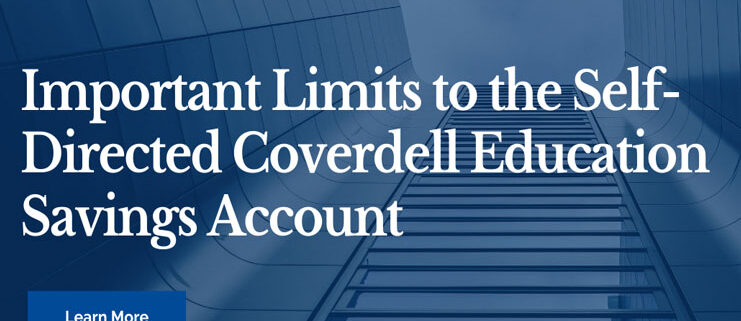Limits to the Self-Directed Coverdell Education Savings Account
Education savings is already hard. Not only are tuitions going up, but with recent inflation, it seems like every dollar has to stretch further and further just for the average investor to make ends meet. One potential solution for investors is the Self-Directed Coverdell Education Savings Account—a way for investors to not only put money away for education savings, but to receive tax-protected benefits when they do so.
And while this kind of account can be a great idea, it’s also worth nothing that there are some strict rules for how they work. By adequately planning your habits to fit within these rules, you shouldn’t have any problems. So let’s explore what the rules are and how you’ll have to think about them if you want to stretch your dollar for long-term savings in education.
(Note: we also cover much of this ground—and more—at our Self-Directed Coverdell Education Savings Account page, which is worth looking at if you want to learn more.)
Understanding Contribution Limits
One crucial limitation of Self-Directed Coverdell Education Savings Accounts is the total contribution cap. Regardless of how many accounts you establish for a beneficiary, the total contributions cannot exceed $2,000 per year. This restriction applies universally, ensuring fairness and adherence to regulatory standards. Whether that’s good news or bad news—only you can decide.
One more thing here. Contributors to Self-Directed Coverdell Education Savings Accounts should be mindful of contribution limits based on their Modified Adjusted Gross Income (MAGI). These limits dictate the maximum allowable contributions, ensuring compliance with IRS regulations. Contributions can be made until the due date of the contributor’s return, without extensions, providing some flexibility for last-minute contributions. Of course, you should always double-check these strategies with your tax advisor before you make any decisions.
Identifying Eligible Beneficiaries
A beneficiary, in the context of a Self-Directed Coverdell Education Savings Account, typically refers to individuals under the age of 18 or those with special needs. These accounts are designed to support educational expenses for qualifying beneficiaries. And you may be surprised that there are plenty of beneficiary types—perhaps more than you expected. Typically, these accounts are made for children under 18, but that doesn’t mean you’re limited to only these types of beneficiaries. You might want to do further research if you believe you have a beneficiary who may qualify.
Tax Implications and Growth Potential
Contributions made to Self-Directed Coverdell Education Savings Accounts are not tax-deductible. However, the deposited amounts grow tax-free within the account until distributed. In that way, to functions a little bit like a Roth IRA, in that you won’t deduct the contributions you make. This tax-advantaged growth potential can significantly enhance the overall value of the savings accumulated over time.
Tax-Free Distributions for Qualified Expenses
One of the key benefits of Self-Directed Coverdell Education Savings Accounts is the tax treatment of distributions. As long as the distributions are used for qualified education expenses at eligible institutions, the beneficiary won’t owe tax on them. This tax-free status applies to both higher education expenses and eligible elementary and secondary education costs.
Self-Directed Coverdell Education Savings Accounts offer a tax-advantaged strategy to save for educational expenses. By understanding the contribution limits and tax implications associated with these accounts, you can effectively plan for your loved one’s educational future. It’s a great way to plan ahead.
Interested in learning more about Self-Directed Coverdell Education Savings Accounts and how they can benefit your family? Don’t hesitate to reach out to American IRA at 866-7500-IRA. Our team is here to provide guidance and support as you navigate the uncertain world of education savings planning.



